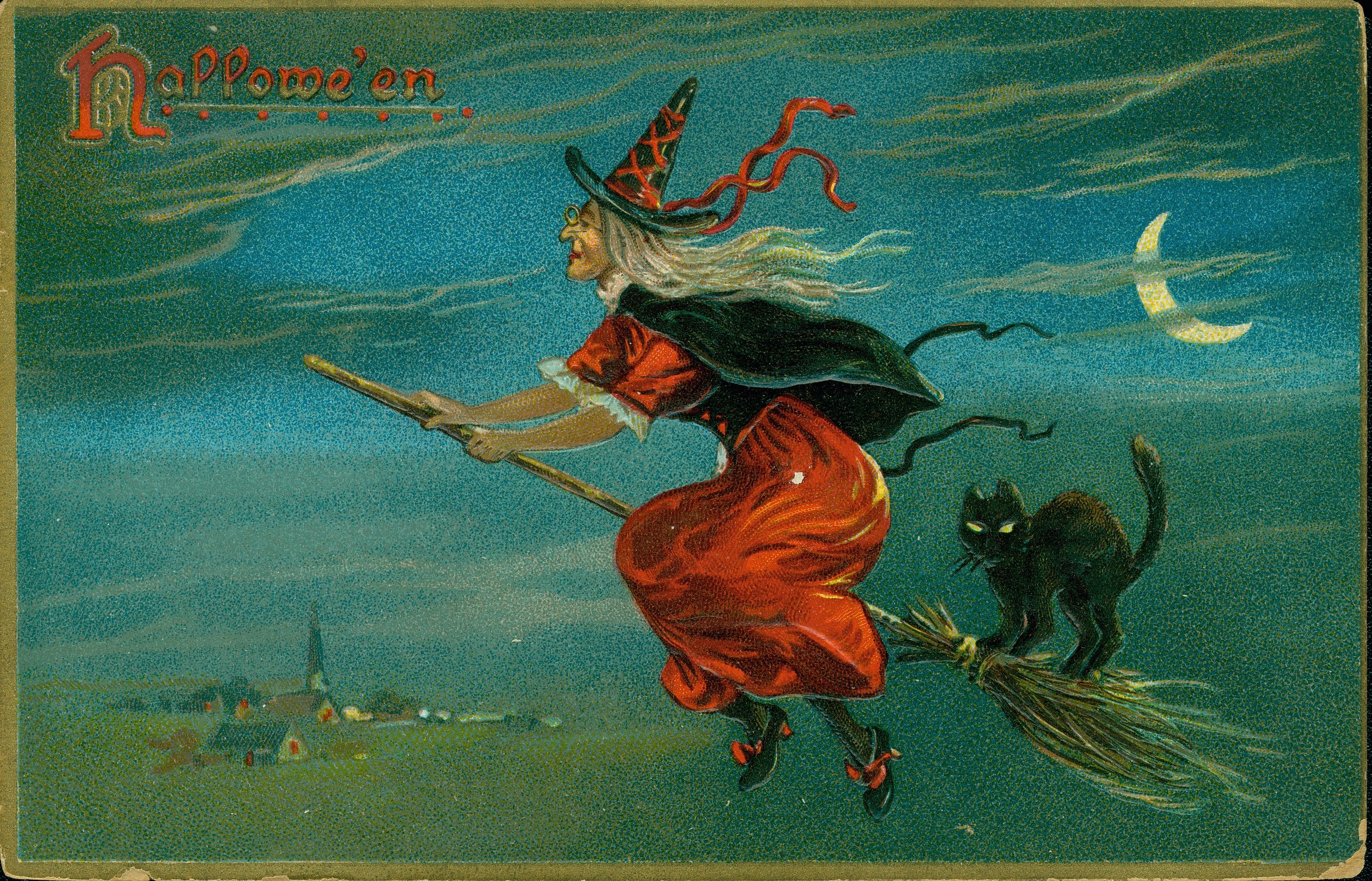By Hugh Town harbour by Richard Croft, CC BY-SA 2.0, https://commons.wikimedia.org/w/index.php?curid=104956060
A Town with an Ocean View from Kiki’s Delivery Service Joe Hisaishi Grade 4 ABRSM 2025 – 2026
Character/story of the piece – this piece accompanies a show that is based on the book, Kiki’s Delivery Service. The main themes of the book are independence, maturity and self-reliance. Kiki is a young witch who has a cat called Jiji who can talk. She leaves home so she can gain her independence and become useful in a new community. She arrives in Koriko, a town by the sea, and there she sets up a delivery service. Perhaps the player could imagine that the part, which is heard the first time in bars 5 – 13, is where Kiki is on her broomstick as part of her delivery service. There is an introduction and a postlude and there are two other sections where Kiki is interacting with members of the community. It would be wise for the player to listen to a recording of the composer as the conductor of an orchestra. The introduction and postlude are played by a full orchestra. Bars 5 – 13 are played by string instruments which are being plucked. The following contrasting section has French horns being played and there is a lusher and fuller texture in this section. When the theme that is present in bars 5 – 13 is played again, more instruments are being played and this time the strings are being played with the bow. There is a flute and cello duet in bars 31 – 38 and on its repeat, more instruments are added both in number and in type. The music differs after this point however the theme of bars 5 – 13 could have been played with a different combination of instruments and the postlude is played by the full orchestra. The player needs to keep this instrumentation in mind, as this will influence their thinking on the texture of the music.
Form – this music has a rondo form, with the first theme presented in bars 5 – 13 recurring another two times. As already stated, there is an introduction and a postlude as well as two other sections containing contrasting material. The piece is in the key of E minor, although there are numerous occasions where the music feels a little unsettled key wise. By the end of the introduction, the music is in the key of B major although this of course is the dominant chord of E minor. The following theme commences in E minor and continues in E minor throughout. The following section moves through several keys before moving to the dominant chord of E minor. The other contrasting section in bars 31 – 38 again moves through a series of keys however this section ends in E minor. At the end of the piece there is a feeling of restlessness key wise, and the piece finishes with a tierce de Picardie.
Main part of the music – the loudest part of the music should occur in the postlude in bar 48 at a forte dynamic. Each section requires a focal point too and some additions to the dynamics provided is necessary.
Phrasing – as already mentioned, there are seven sections in this music, which includes the introduction and postlude. The introduction and postlude contain one phrase each, each being five bars long. This is effective use of phrasing as it helps to underline the fact that these sections are at the start and at the end. In sections two, four and six (being the same material) there are two phrases, each being four bars long and both commencing with an upbeat. The melodic material of these phrases is the same for the first two bars of each however they differ in the final two bars. There is though, a different L.H. pattern in each phrase with the sequential patterns descending in the first phrase and ascending in the second phrase, which is very effective in providing the second phrase with more tension and drama. During the third section there are two phrases again, each being four bars in length and both commencing on an upbeat. These two phrases complement each other; they have a question-and-answer format. Section five has two phrases, each four bars long and both commencing on the first beat of the bar. This clearly is a contrast to the melodic material and phrasing already used in the music. The phrasing is an integral part of this piece.
Tempo, time signature and rhythmic patterns – the tempo of 100 crotchet beats per minute is appropriate for the character of the piece. The player must take care that the tempo does not accelerate. This piece is in Common time which allows the phrases to have breadth and flow. There are two instances where the time signature changes to duple time; this creates a feeling of tension and drama in the music. The player must be careful to ensure that they do not wait longer than they should at these points, otherwise the effect of the duple time will be lost. There is a danger that the player may alter the dotted rhythms that occur in the introduction, the third section and the postlude. There are times where this rhythm sounds as if it is incorrectly played because the dynamics of the quaver or semiquaver notes is too loud in comparison with the faded tone of the dotted crotchet. During the fourth section the quaver/two semiquaver pattern must remain taut and controlled. It is interesting to note how this pattern ‘crosses’ over the beats. Throughout this piece the rests must be strictly observed.
By Raphael Tuck and Sons - Missouri History MuseumURL: http://images.mohistory.org/image/61D62B74-0982-11D8-6021-5EE9C319F2D7/original.jpgGallery: http://collections.mohistory.org/resource/153230, Public Domain, https://commons.wikimedia.org/w/index.php?curid=61727504
Touch/articulation – this piece is full of contrasts, and the touch and articulation required is no exception. Firstly, in relation to the touch, it would be wise for the player to consider this regarding the instrumentation. In the introduction, considering that the full orchestra is playing, the R.H. requires a cantabile touch accompanied by resonant L.H. chords. However, the L.H. quavers need to be gently detached, as this is a reference to the melodic material contained in the next section. Both hands in the repeated sections require an intense touch as they are imitating the violins being plucked. There is a lusher texture required in the third section, as it is a duet between the French horns and the cellos. Again, a cantabile touch needs to be used in both hands except in the L.H. when it is playing the longer chords. These chords should be played with resonance. The fourth section requires a change, as this will contrast with the melodic material of the previous section. In this section the flutes and cellos play a duet supported by the orchestra. The L.H. should be played with a resonant touch, as these chords generate the momentum required as well as supporting the dynamic levels. In this section the R.H. needs to be gently highlighted; a tender cantabile touch will project the melodic line. The postlude should be approached in the same way as the introduction.
The two note slurs in the repeated section must be strictly observed as well as the three note slurs in the fourth section. When detaching the final note of the three-note slurs of the fourth section, the finger must stay in contact with the key as it returns so that there is a gentle lift rather than an overly detached sound. It is interesting to note that the arrangement does not include staccato dots on the third note of the quaver patterns in the repeated sections. The player should linger slightly longer on these notes.
Dynamics – a full range of dynamics can be utilised when playing this piece from pianissimo to forte. There should always be a sense of restraint in the dynamics used in this piece considering much of the piece has delicacy and sensitivity. The L.H.’s dynamics, as always, are extremely important because a change in the L.H.’s dynamics will make a significant change to the overall dynamics of the music. The player must be very careful how the phrases connect from one to the other dynamically so that the sections feel as if they are part of a whole.
Balance between the hands - for the most part the balance is to the R.H. although the L.H. has an important role to play. The L.H. patterns in the repeated section have an interesting descending or ascending pattern which must be highlighted. There are occasions where the L.H. plays on its own and these passages need to be carefully projected for the listener.
Rubato – the change from quadruple time signature to a duple time signature that occurs twice in this piece is a kind of agogic effect as the change adds a degree of acceleration to the music. A few small touches of rubato can be applied to the music however these need to be kept to a minimum and should not become predictable in any way. The player must ensure that the upbeat beginning of many phrases is not altered, as these upbeat beginnings are an integral aspect of the music.
Pedal – this is another aspect that can provide contrast and interest for the listener. The repeated section should be devoid of pedal as this will allow the detached notes to be noticed and will provide a ‘drier’ tone for the music. Legato pedalling can be used in the introduction, postlude and sections three and five. Thought should be given as to what to do with the foot when it is not pedalling.
Considerations when playing this piece –The player should notice the difference created by the use in the R.H. of the C sharp in bar 20 and the C natural in bar 21. Bar 21 is an echo of bar 20.
The player must always be forward thinking so that the transitions between sections are executed with ease.
Considering the repeated R.H. notes in bars 14 and 16, the dynamics must be thought out and harshness must be avoided.
The player must give thought to how long they wait at the end of the piece.
Tone-matching is an important skill especially the quaver and semiquavers after the dotted crochet.
There is a chord of a 7th in the R.H. in bar 2; how does this affect the character of the music?
The introduction and postlude have a kind of improvisatory character.
There are occasions where the player will need to highlight the top notes of a chord so that the melody is projected.
In bars 15 and 17 both hands must lift simultaneously on the third beat so that the upbeat is clearly heard.
The player must ensure that notes, such as the R.H. E in bar 13, are held for their correct value.
In the repeated sections, the last note of each L.H. pattern is important dynamically.
In the introduction it feels as if the opening credits are being shown; the music presents a ‘flavour’ of what is going to happen in the story.
Considering the duple bars the player can use the metronome however after the first duple bar the metronome bell will ring on the third beat of the bar. After the second duple bar, the metronome bell will be ringing in its correct position.
The player can think of the L.H. patterns in the repeated section as arpeggios.
The first R.H. note needs to be played with a degree of resonance. The second R.H. needs to feel as if it ‘rises’ out of the first note.
The R.H. fingering in bars 11, 12 and 34.
In bars 31 – 38 the L.H. could sound ‘clunky’. These chords could potentially be played with a splitting effect.
There are a few clashes between the hands.
In the R.H. in bars 15 and 17 there should be no ‘thump’ when playing the third chord.
There needs to be a character change between each section, it needs to sound as if the story is evolving.
The character of the repeated section must change each time it is played as it helps the story to evolve. The character of the first playing could sound a little diffident, the second time more confident and the third playing it should sound completely confident and assured.
There needs to be a contrast in the character between the beginning and the ending.
The player must ensure that bar 5 sounds as if it ‘belongs’ to the introduction.



